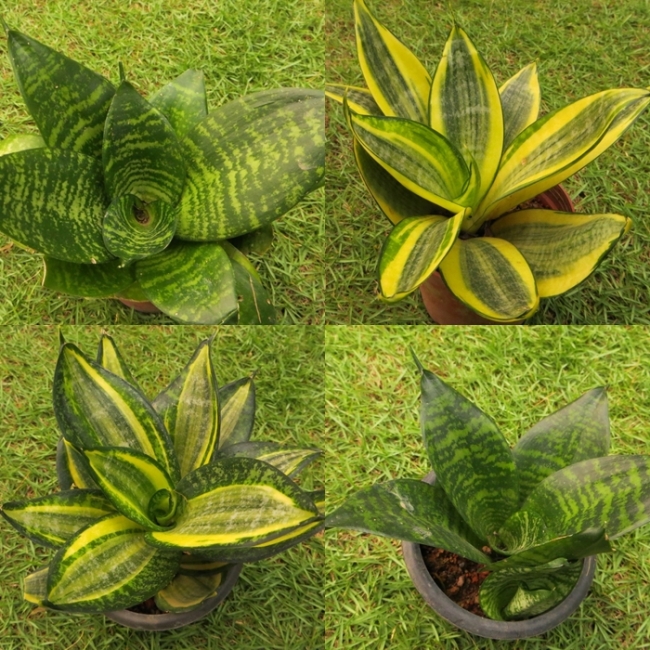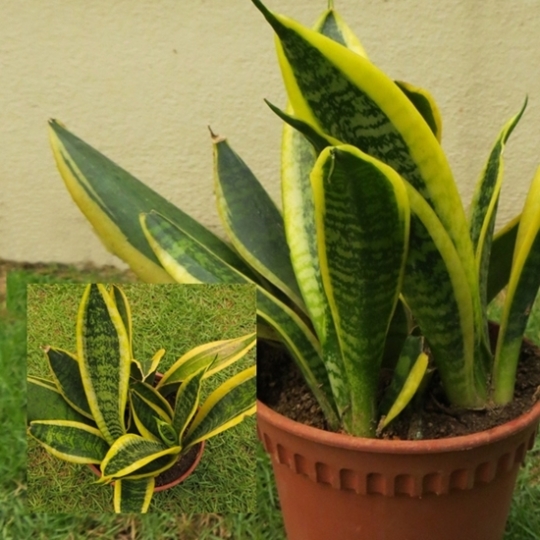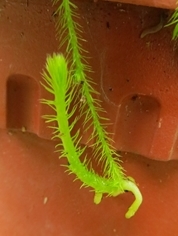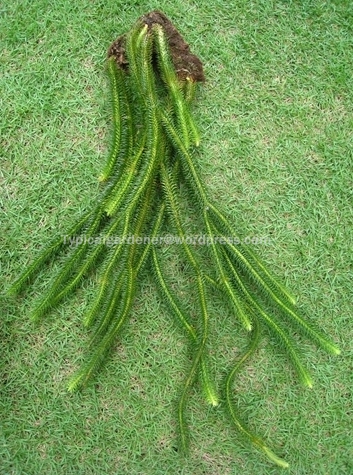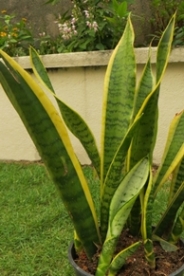 It’s supposed to be an honour to have a plant named after you. But what if the plant was the Sansevieria; commonly known as Mother-in-law’s Tongue?
It’s supposed to be an honour to have a plant named after you. But what if the plant was the Sansevieria; commonly known as Mother-in-law’s Tongue?
The poor lady couldn’t have been amused especially since the plant’s hard sheaths have sharp pointed ends.
We had a huge clump of Sansevieria Trifasciata which had to be removed when we shifted the driveway. No one shed a tear.
Then many years later, someone gave me the tough rod-like Sansevieria Cylindrical. I thought the rods looked lethal and that someone could end up being impaled, so these too were duly removed. Once again there were no regrets.
 Then the office next door caught fire. The quality of the air was badly compromised and we were desperate for an air purifier. I googled for answers and discovered just how amazing the Sanseviera really was.
Then the office next door caught fire. The quality of the air was badly compromised and we were desperate for an air purifier. I googled for answers and discovered just how amazing the Sanseviera really was.
NASA, apparently, revealed that the Sansevieria has the ability to absorb 107 unknown air pollutants including carbon monoxide and nitrogen monoxide (source: http://1st-ecofriendlyplanet.com/12/sansevieria/). Now, that really grabbed my attention.
That day, the scorned became the savior.
Two big pots of Sansevieria Trifasciata were wheeled into the office in an attempt to rid the air of some toxins.
At home, I started collecting the Sansevieria in earnest. The S. Trifasciata Hahnii, S. Futura Superba and S. Golden Hahnii Bonsai came hot on the heels of the Sansevieria Trifasciata.
Each were placed in small pots for easy handling.And so when the haze came and facemasks flew off the shelves and everyone clambered to buy air purifiers, I turned to my collection of Sansevierias.
My sister who was visiting thought the tray of assorted Sansevieria looked lovely.
Granted that the varieties we see now are more appealing in form and colour than what we had a few decades ago, who would have thought that could be said the Mother-in-law’s Tongue?
.
.
Care and propagation: shade to full sun; garden soil; water moderately; propagate by division
